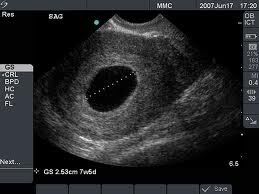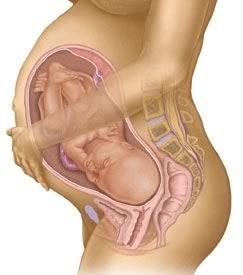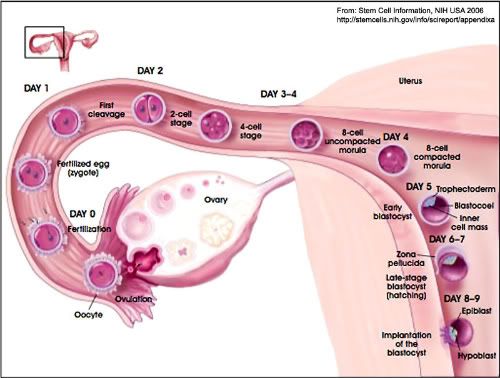1) is it possible for the gestational sac to continue growing after missed miscarriage?
Not technically. Technically for a pregnancy to be classified as a 'missed miscarriage', the pregnancy will have already ended, but without the process of miscarriage beginning.
A Missed Miscarriage by definition is a fetal demise/death that has occurred without the process of miscarriage starting. For the gestational sac to continue to grow, there would need to be a continuing pregnancy of some sort.
I would think this question is for an early pregnancy that hasn't quite gone past the embryonic stage to a fetus in which one can really only identify a sac, a fetal pole and/or a heartbeat. And, if you don't see a heartbeat, it doesn't always mean fetal demise.
"The gestational sac can be visualized as early as four and a half weeks of gestation and the yolk sac at about five weeks. The embryo can be observed and measured by about five and a half weeks. Ultrasound can also very importantly confirm the site of the pregnancy is within the cavity of the uterus.
Blighted ovum will usually give typical pictures of a deformed gestational sac and absence of fetal poles or heart beat." source
If you, however, don't see a heartbeat after several attempts, I'd say the pregnancy has ended.
If the sac is still growing, and there is no heartbeat, I'd be far more curious about what is going on.
"A blighted ovum is a type of miscarriage in which the baby either never develops or stops growing at a very early stage in pregnancy and then disintegrates -- but a gestational sac does develop and the body does not recognize that the baby is missing.
Doctors believe that blighted ovums are the result of chromosomal abnormalities in the fertilized egg." source
Blood tests that measure the hcg hormone in units is your best bet. Because, a pregnancy will not continue if the hcg is not rising. End of story. The pregnancy naturally begins a hcg decline once the placenta is fully established and the baby is almost in the later stages of the 2nd trimester.
"In a blighted ovum, it is true that the baby did not develop enough to be visible on ultrasound, but a conception did occur and the pregnancy did exist -- and it is OK to grieve the loss of the baby." source
Examples of Blighted Ovum

2)is it possible for hcg level to increase with missed miscarriage?
Not technically. Technically for a pregnancy to be classified as a 'missed miscarriage', the pregnancy will have already ended, but without the process of miscarriage beginning.
Until fetal demise, there is always a chance of the hcg to increase, albeit not at a normal level. Some inevitable miscarriages will feature hcg growth of 1 to 10 units between draws signally the pregnancy is continuing but not at a healthy or ongoing rate. Once the hcg begins to fall, the body has recognised a fetal death or demise.
Often, a slow growth rate of below normal will occur, prolonging the pregnancy although it will not eventuate into a successful birth. Generally, the pregnancy will begin to arrest before the 2nd trimester, making this a traumatic and slow, devastating time for the couple.
3) miscarriage ultrasound pictures
Click on to my Miscarriage page to see some great ultrasound pics.
4)sac like tissue miscarriage
I imagine this question is for the woman who is passing tissue. I have no idea what the sac looks like as all I have ever passed looked like a quarter sized, light purple, shiny bit of raw chicken thighs, which I imagine was the 'product of conception'. Everything else I assume is endometrial lining.
You have to remember that these things are so incredibly tiny they may be passed with the blood loss. I believe we're looking for something the size of a rice grain, possibly to the size of a raisin, and it's likely to pass without ever being seen.
You are far more likely to see clotting and endometrial tissue.
4) blighted ovum ultrasound
Examples of Blighted Ovum

5)is heavy travel during 1 week of pregnancy cause chromosomal abnormality?
No. Travelling cannot change the genetic outcome of your pregnancy. It can change the physical hormone profile of the pregnant mother, but once sperm and egg meet, nothing can any abnormality that exists.
The only time a mother can influence her pregnancy's outcome is by what she puts into her body during preconception and post conception. Things like FOLIC ACID can help to prevent neural tube defects, but once an embryo has formed, you cannot change that embryo's genetic make up for the better or the worse.
This is why PRENATAL care is the BEST thing you can EVER do for your children.
6) right side tubal pregnancy ultrasound
The fallopian tube is the most common site (95%) for ectopic pregnancy.

The OV stands for ovary and the pregnancy is located in the tube.
7)inside a womans body diagram

8) empty sac ultrasound

This is an empty gestational sac (which can be visualized on an ultrasound.
9) diagram of pregnant woman

10) stages of an egg traveling to the uterus
This is truly one of the best you will find as it features both the stages of egg maturation and the process of conception to implantation.

11) causes of hidden fallopian tubes
Often, when a woman goes for an ultrasound, especially if it's an abdominal ultrasound and not a transvaginal one, various parts of your anatomy may not appear. It's not that you don't *have* these bits, it's just that the machine cannot visualise them.
We tend to forget that our bodies are living. They move. They sway. They are not as flat and static as textbooks represent. The best way to visualise this is to think of an aquarium.
The movement of the water makes plants sway back and forth and from side to side. The movement of fish in the water also affects the sway of the fish. It's the same if you're snorkling or scuba diving and see kelp growing upwards. Lots affect the movement, but it is never, ever static.
The same is true of your internal organs. They are always moving. Gurgling of the bowels, spasms of the uterus, etc cause your organs to move 'out' of the picture they're trying to take via the scan.
Another cause is your bladder. It's infamous for hiding ovaries.
I once had an abdominal scan for cysts and the tech was sure I didn't have a left ovary, which would suck because my right ovary is the 'bad' one. I told her that I had a laparoscopy in 2003 which did indeed show I have a left ovary. But she was convinced. Finally, I got up, shook myself all over and laid back down. Voila! There is was.
So, if you had a hidden tube, more than likely it's there. You might just need a better machine or go transvag.
12) hidden embryo appears in ultrasound
Big hugs to anyone who has gone through the process of trying to find an early pregnancy on ultrasound, especially if it's not blatantly there.
I've experienced two situations. 1) Look, there's your baby or 2) I'm sorry, there's no baby.
I've never been in the situation of trying to find something that may or may not be there, but many people have, lots of my friends included.
My best advice would be to have several hcg draws and schedule another scan for 7 days later. As the embryo develops into a fetus, you will be more likely to see it, especially if you're relying on an abdominal ultrasound or a poor quality machine.
If it's still not visible 7 days later, I'd go for a transvag ultrasound and look to your hcg numbers.
Lots of twins (or even the occasional tripley) 'appear' a couple weeks after the initial pregnancy ultrasound. That's not because they didn't exist then, the machine just didn't catch them.
13) diagrams of miscarriages
I'm not sure what you were looking for, but I hope this helps.






1 comments:
This is valuable information about miscarriage. Implementation upon the points can ensure safe pregnancy.
Tubal Ligation Reversal – http://www.mybabydoc.com
Post a Comment